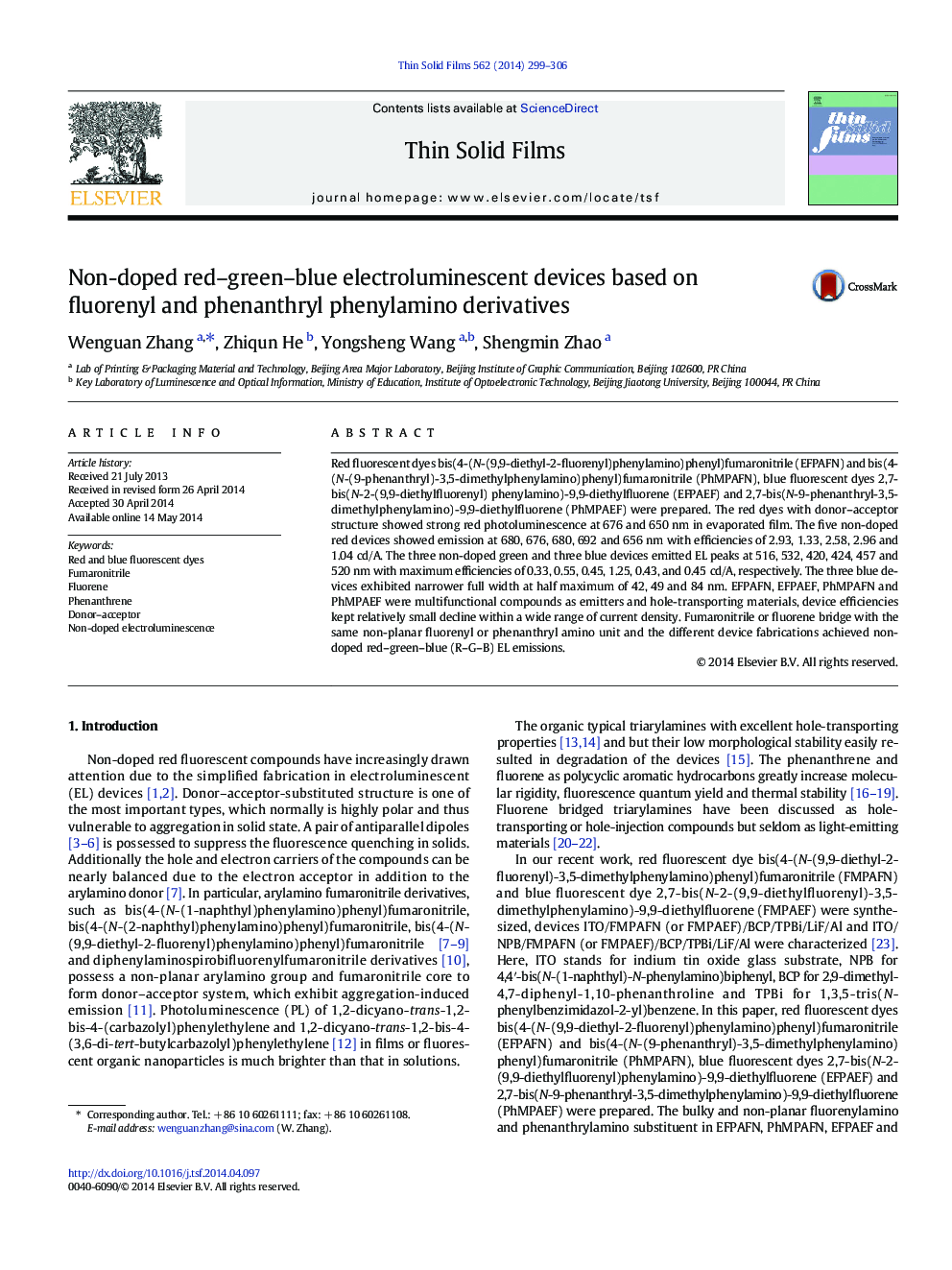| Article ID | Journal | Published Year | Pages | File Type |
|---|---|---|---|---|
| 1665192 | Thin Solid Films | 2014 | 8 Pages |
•Fumaronitrile and fluorene bridge with fluorenyl or phenanthrylamine were prepared.•The dyes acted as both emitters and hole-transporting materials in electroluminescent devices.•Five red devices prepared emitted at 680, 676, 680, 692 and 656 nm.•Green and blue ones emitted at 516, 532, 420, 424, 457 and 520 nm.•The different centric cores and fabricated devices exhibited R–G–B emissions.
Red fluorescent dyes bis(4-(N-(9,9-diethyl-2-fluorenyl)phenylamino)phenyl)fumaronitrile (EFPAFN) and bis(4-(N-(9-phenanthryl)-3,5-dimethylphenylamino)phenyl)fumaronitrile (PhMPAFN), blue fluorescent dyes 2,7-bis(N-2-(9,9-diethylfluorenyl) phenylamino)-9,9-diethylfluorene (EFPAEF) and 2,7-bis(N-9-phenanthryl-3,5-dimethylphenylamino)-9,9-diethylfluorene (PhMPAEF) were prepared. The red dyes with donor–acceptor structure showed strong red photoluminescence at 676 and 650 nm in evaporated film. The five non-doped red devices showed emission at 680, 676, 680, 692 and 656 nm with efficiencies of 2.93, 1.33, 2.58, 2.96 and 1.04 cd/A. The three non-doped green and three blue devices emitted EL peaks at 516, 532, 420, 424, 457 and 520 nm with maximum efficiencies of 0.33, 0.55, 0.45, 1.25, 0.43, and 0.45 cd/A, respectively. The three blue devices exhibited narrower full width at half maximum of 42, 49 and 84 nm. EFPAFN, EFPAEF, PhMPAFN and PhMPAEF were multifunctional compounds as emitters and hole-transporting materials, device efficiencies kept relatively small decline within a wide range of current density. Fumaronitrile or fluorene bridge with the same non-planar fluorenyl or phenanthryl amino unit and the different device fabrications achieved non-doped red–green–blue (R–G–B) EL emissions.
